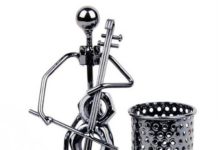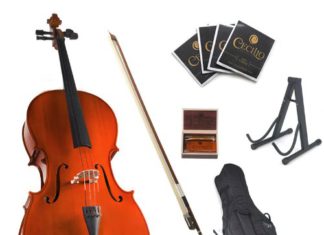Summer is nearly upon us so it’s time to get your cello ready for summer. In order to make sure your cello stays in perfect playing condition, we have provided a set of tips for you to consider as the temperatures and humidity increase this summer.
Watch the Humidity
Unlike in the winter where the risk is low humidity, we have the opposite issue in the summer. With hot summer temperatures also comes high humidity, the kind that can wreck havoc on your precious cello. When humidity interacts with your cello
High humidity poses two problems: wood expansion and loosened glue.
Wood expansion causes the angle of the neck to lower
The lowering of the neck results in the strings being higher from the fingerboard which requires cello players to press harder on the strings to achieve the appropriate sound. Some cellists actually have a second shorter bridge specifically for the summer months. However, the expansion of the rest of the cello body can actually prevent cellists from changing the bridge themselves because the sound post becomes loosened from the expansion.
This makes June the best month to take your cello to the luthier to have the bridge and sound post adjusted, and have any other work you need doing. We also recommend that you get new bow hair and strings in June since most students are off from school during this time and won’t need their instruments for school orchestra.
Humidity loosens the glue holding the cello together
Cellos are held together with a very old glue recipe that is meant to soften when water is applied. This makes it very easy for repair shops to take instruments apart and quickly repair them, but when the joints become wet because of humidity, the same thing happens.
Therefore during the summer if humidity becomes too high, your cello’s seams might start opening up or the wood might warp permanently. If either of these situations occur, we highly recommend taking your cello to the nearest violin shop to get it repaired as further damage could become quite costly or could ruin your cello for good.
Store Your Cello in a Cool Area
Cellos like moderate, stable temperatures. As long as your cello is kept at a stable temperature, the exact temperature is not as much of a concern. However, avoid keeping your cello at temperatures greater than 80 degrees. If your cello is kept in extreme temperatures (greater than 100 degrees) give it some time to acclimate to a lower temperature when you reach your destination.
Common signs of heat distress include buzzing, rattling, loss of sonority or changes in the neck angle that result in differences in string height over the fingerboard. If your cello experiences any of these symptoms, we highly recommend that you take it to a violin shop as soon as possible before any further damage is caused.
Use Peg Dope to Loosen Pegs
Another annoying issue of playing your cello in the summer is that the pegs often become impossible to turn. This is because the pegs expand with the heat and humidity, jamming them in the peg hole. There are several remedies for this problem, but the best solutions are often taking preventative measures at the beginning of the summer to prevent jammed pegs later.
Peg dope is a compound that you can apply to the pegs to prevent them from becoming jammed inside the peg hole. It acts as a lubricant between the peg and the peg box hole.
Simply loosen the peg, unwinding the string from it and pull it out of the peg box. Cover the part of the peg that rests in the peg hole with the peg dope and put the peg back into the hole. Restring the peg and you’re set!
Another way my teacher taught me to do this is to use pencil graphite instead of peg dope. It worked just as well and is a great cheap substitute if you have a pencil lying around.
Prepare to Play Outside
With the warm summer temperatures also comes plenty of opportunities to perform outside. Whether your local orchestra hosts a summer outdoors performance or you’re invited to perform at an outdoor wedding, knowing how to prepare yourself for playing outdoors is very important.
Let your cello acclimate
Even if you’re not going to be playing in extreme heat, you need to let your cello adjust to the temperature and humidity of your outdoor venue before you begin playing. This will allow your cello to fully develop its sound and will help prevent unfortunate incidents where strings accidentally loosen.
Bring music stand accessories
Playing outdoors opens you up to the elements of outside. You should always bring music stand clips in case the wind picks up and starts flipping your pages. We also highly recommend bringing a music stand light in case you are playing in the evening or night with no lights, such as at a wedding reception.
Keep your instrument dry
When playing outside, you never know when it’s going to rain. Make sure you bring a waterproof bag or have a car close by to protect your cello from the rain. A hard cello case is not enough protection from the rain, no matter what the description said. Getting your cello wet could result in major damage such as warping or joints coming apart. In the worst case, your cello might become unusable and unrepairable.
Conclusion
We hope this article helps your prepare your cello for summer and prevents any mishaps from exposing your cello to the summer elements. Summertime playing usually brings out the best in cellos. They usually sound better in the summer than winter: richer and fuller.
Table of Contents









